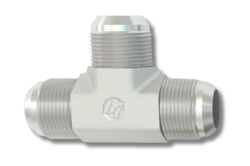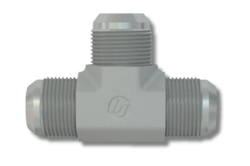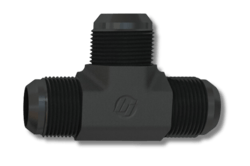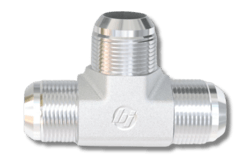 Did you know that the medals given out to athletes during the Olympics aren't made of solid gold, silver, or bronze?
Did you know that the medals given out to athletes during the Olympics aren't made of solid gold, silver, or bronze?
Interestingly, the last solid gold medals were given out at the 1912 Stockholm Games. This fact is fascinating, considering the global significance of the Olympics. This evolution reflects the innovative approaches taken to celebrate excellence while ensuring practicality. So... what are the benefits of plating these medals?
From an industrial manufacturing standpoint, we can provide a probable answer based on the reasoning and benefits of why we plate the materials used for our very own fittings. Let’s dive into how this change in the purity of Olympic medals connects to manufacturing and why plating is so important in both arenas.
 Regulating the Production of Metals
Regulating the Production of Metals
After World War I, rising costs and the growing popularity of metal plating swayed the International Olympic Committee (IOC) to regulate the production of Olympic medals, specifying that medals should be plated, which was made mandatory in 1920. Today’s Olympic medals must follow the composition ratios below:
-
-
-
-
- Gold Medal: Composed of 92.5% silver and plated with 6 grams of 24K gold
- Silver Medal: Composed of silver with at least 92.5% purity
- Bronze Medal: Composed predominantly of copper alloyed with tin and zinc
Image: Rectangle, solid gold, silver, and bronze medals presented to winners at the 1900 Paris Olympics. By Sailko.
-
-
-
Like the IOC, industrial manufacturers discovered plating enhances the durability and resistance of industrial fittings and components. Fast forward, and manufacturers today play by the rules set by the American Society for Testing Materials (ASTM) for metals production. Yes, the Olympics regulates the composition of just three medals, while the ASTM regulates more than 12,000 metal parts. Still, everyone’s in it for the same thing: durability, improved performance, and corrosion resistance, which leads us to our next point.
What Are the Benefits of Plating Metals?
So, what makes plating the go-to solution against corrosion and premature wear for those from industrial manufacturing to the Olympics?
- Enhanced Durability: Plating base metals with durable materials like chromium or gold enhances the durability and look of the metal while preventing rust. Plated almost always outlast those without a protective layer.
- Protection Against External Damage: The increased hardness from plating also ensures your base layer, be it an Olympic gold medal or hydraulic fitting, is protected against the elements, external damage, and impacts.
- Improved Performance: For manufacturers, plating materials provide better electrical and thermal conductivity, giving you options on which outer layer best fits your working environment and project needs.
Case Study by Charles Goldman: Plating, when done correctly, extends the lifetime of parts, components, equipment, and objects exponentially. However, when done improperly, either through inadequate methods or material mismatch, can cause negative results like what reportedly has happened to Olympic winners’ medals from the 2016 Rio Olympics in Brazil. Plating procedures for these medals were brought into question.
Plating Methods – Which One is Right for You?
Different industries will require varying levels of corrosion resistance for their fittings, which can be achieved through separate plating methods. Some of the more common plating methods are:
How it works: Electric current and chemical compounds are used to deposit a metal layer onto a base metal material.
- Pros: Versatile and applicable to many materials
- Cons: Mismanagement can be environmentally hazardous
How it works: Components are submerged into a chemical solution, causing ions to form a metal layer on the base surface.
- Pros: No need for electrical current works on complex shapes
- Cons: Slow process and limited range of plating materials
 Immersion Plating
Immersion Plating
How it works: Dips reactive base metals into a solution, the reaction forming a thin layer
- Pros: Simple and cost-effective for smaller components
- Cons: Limited metal combinations and thinner coatings
 Physical Vapor Deposition (PVD)
Physical Vapor Deposition (PVD)
How it works: Vaporizes and deposits materials in a vacuum chamber
- Pros: Environmentally friendly with good adhesion
- Cons: Expensive and complex
Choosing Your Metal – Different Plating Materials and Substrates
Each type of plating material has its pros and cons as well. Here’s a quick look:
|
Plating Material |
Pros |
Cons |
Common Applications |
|
Chromium |
Hard, high wear and corrosion resistance |
Toxicity concerns |
Automotive, manufacturing, aerospace, electronics |
|
Nickel |
Pliable, good base layer |
Allergenic, environmental issues |
Automotive, aerospace, electronics, manufacturing, hydraulics |
|
Copper |
High conductivity, pliable, good base layer |
Susceptible to corrosion |
Automotive, aerospace, electronics, decorative, manufacturing, hydraulics |
|
Zinc |
Cost-effective |
Lower durability |
Automotive, construction, tools |
|
Gold |
High conductivity, aesthetic |
Expensive |
Automotive, aerospace, electronics, jewelry |
|
Silver |
High conductivity, antibacterial |
Tarnishes easily |
Automotive, aerospace, electronics, jewelry |
|
Tin |
Pliable, easily solderable |
Soft texture, low melting points |
Automotive, aerospace, construction, electronics |
|
Brennan Black® |
Highly durable, element resistant |
Contact damage susceptibility |
Automotive, aerospace, construction, manufacturing, hydraulics |
Base Layer, or Substrate Considerations
Here are some common base layers or substrate materials that are usually strengthened with plating:
- Stainless Steel: Already corrosion-resistant on its own, stainless steel is usually passivated to remove free irons on the surface, keeping it rust-free. Passivated stainless steel can also be plated with chromium to improve durability for heavy-duty and industrial applications.
- Aluminum: Lightweight with good thermal conductivity; typically enhanced with nickel, chromium, or copper.
- Carbon Steel: Found in hardware, automotive, and industrial manufacturing sectors, carbon steel offers strength and cost-effectiveness. Good adhesion qualities see it often plated with zinc, nickel, chromium, copper, and even precious metals like gold for aesthetic and decorative purposes.
- Titanium: Used in the aerospace, industrial chemical processing and hydraulics, construction, and automotive industries, titanium has high corrosion resistance but is expensive.
- Copper: Commonly found in electronics for its conductivity, usually plated with nickel, chromium, or tin.
Brennan's Edge
Improper plating can lead to rust that affects performance over time. To exceed quality standards set by ASTM and SAE, we go above and beyond, investing in world-class, cutting-edge equipment and expertise.
- 'The LAB', Class 8 Cleanroom and Salt Spray Testing Chamber: Our highly trained team utilizes advanced laboratory equipment to ensure our parts meet rigorous technical cleanliness guidelines and plating standards. This process involves a series of meticulous internal tests, controlled pressure rinsing, and detailed microscopic analysis—similar to how a pressure cooker thoroughly cooks rice by maintaining controlled pressure and temperature.
- Corrosion-Resistant, Specialty Engineered Parts: We provide over 120,000 hydraulic, pneumatic, and instrumentation fittings designed to resist rust. Our specialty-engineered, corrosion-resistant options include Brennan’s Zinc Nickel Blend, Brennan Black, and CR3, among others, tailored to meet your specific needs. In addition to carbon steel and stainless steel, our fittings are also available in brass, aluminum and other exotic alloys.
CR3™
Brennan’s standard Trivalent CR3™ plating performs at nearly double the S.A.E. corrosion resistance requirement. This plating is silver in appearance and has been tested at 120 hours to white rust and 240 hours to red rust.

ZINC NICKEL BLEND
Developed to the requirements of leading OEMs, Brennan’s Zinc Nickel blend has proven durability and corrosion resistance nearly five times the industry standard. Independently tested at 360 hours to white rust and 504 hours to red, Brennan’s Zinc Nickel is an excellent, cost-effective choice for enhanced performance.

BRENNAN BLACK®
Brennan Black® is the industry’s most advanced protection for highly corrosive applications. Field and lab tests show that our coating resists red rust beyond 1,700 hours of exposure- that means an advantage of more than 300% when compared to other plating. A proprietary blend of fluoropolymer, engineering plastics and selected corrosion inhibitors, Brennan Black® protects your equipment investment and ensures longevity in the most corrosive environments, reducing your replacement costs.

STAINLESS STEEL
For the ultimate corrosion resistance, stainless steel fittings are the best choice. Stainless steel is strong and has a wide temperature range of 425° to 800°, combined with excellent chemical and corrosion resistance properties. Stainless steel is required for many marine, chemical, gas and offshore equipment applications. Brennan manufactures and stocks an extensive range of stainless steel fittings.

CONCLUSION
From Olympic medals to industrial manufacturing components, plating has revolutionized the durability, performance, and lifespan of metal compounds. At Brennan, we pride ourselves on leading the charge with top-notch, corrosion-resistant, durable plated components.
About Brennan Industries
Brennan Industries, Inc. is a key player in the world of hydraulic, pneumatic and instrumentation fittings, bringing decades of excellence to the industry. Brennan has consistently delivered high-quality and custom solutions with distribution centers strategically placed worldwide. Brennan's dedication to innovation and precision has established the company as a leading force in driving advancements in technologies related to hydraulics and pneumatics. To explore Brennan's extensive product range and learn more about its commitment to excellence, visit www.brennaninc.com.

